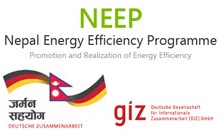- Review the tariff agreement with the utility to meet requirements at optimum cost.
- Schedule plant operations to maintain a high load factor.
- Shift loads to off-peak times where possible.
- Minimize maximum demand by controlling loads through an automatic demand controller.
- Stagger start-up times for equipment with large starting currents to minimize load peaking.
- Use standby electric generation equipment for on-peak high load periods.
- Correct power factor to well above 0.90 by installing additional capacitors and automatic power factor controllers, avoid motor under-load conditions, and take advantage of PF improvement incentives if any are available.
- Ensure that all capacitors are in line and functional, by checking charging current and fuse condition.
- Relocate transformers close to main loads.
- Set transformer taps to optimum settings.
- Disconnect primary power to transformers that do not serve any active loads.
- Consider efficient on-site captive generation or cogeneration based on cost benefits with highest steam parameters.
- Export power to grid if there is any surplus in captive generation if cost benefits permit.
- Periodically, calibrate the utility’s electricity meter with your own meter for accuracy.
- Shut off unnecessary and idle process equipment, utilities, and office equipment like computers, printers, and copiers at night.
- Properly size to the load for optimum efficiency. (High-efficiency motors offer 4%–5% higher efficiency than standard motors.)
- Use energy-efficient motors where economical.
- se synchronous motors to improve power factor.
- Provide proper ventilation. (For every 10ºC increase in motor operating temperature over the recommended peak, the motor life is estimated to be halved.)
- Check for under-voltage and over-voltage conditions.
- Balance the three-phase power supply. (An unbalanced voltage can reduce motor input power by 3%–5%.)
- Demand efficiency restoration after motor rewinding. (If rewinding is not done properly, the efficiency can be reduced by 5%–8 %.)
- Use variable-speed drives for large variable loads.
- Use high-efficiency gear couplings.
- Use precision alignment.
- Check belt tension regularly.
- Eliminate variable-pitch pulleys.
- Use energy efficient belts as alternatives to old v-belts.
- Eliminate inefficient couplings.
- Shut the loads off when not needed, adopting interlocks, controls.
Further readings
Electric load management in Industries - The objective of this e-book is to give the readers an overview on how load management can be best implemented by industrial electricity users. The content of this brochure is specially focused on typical applications in the small and medium sectors of industry. However, the brochure will also be of interest to utility marketing and distribution personnel, energy consultants and process and equipment manufacturers.
Training Manual on Energy Efficiency for Small and Medium Enterprises - This is a publication of Asian Productivity Association (APO) that contains a detailed chapter on energy efficiency in electrical systems. Furthermore, relevant technical information on energy efficiency in industries is given in a very practical and easily understandable way. This handbook makes implementation of energy saving options very easy for Asian's SMEs.



